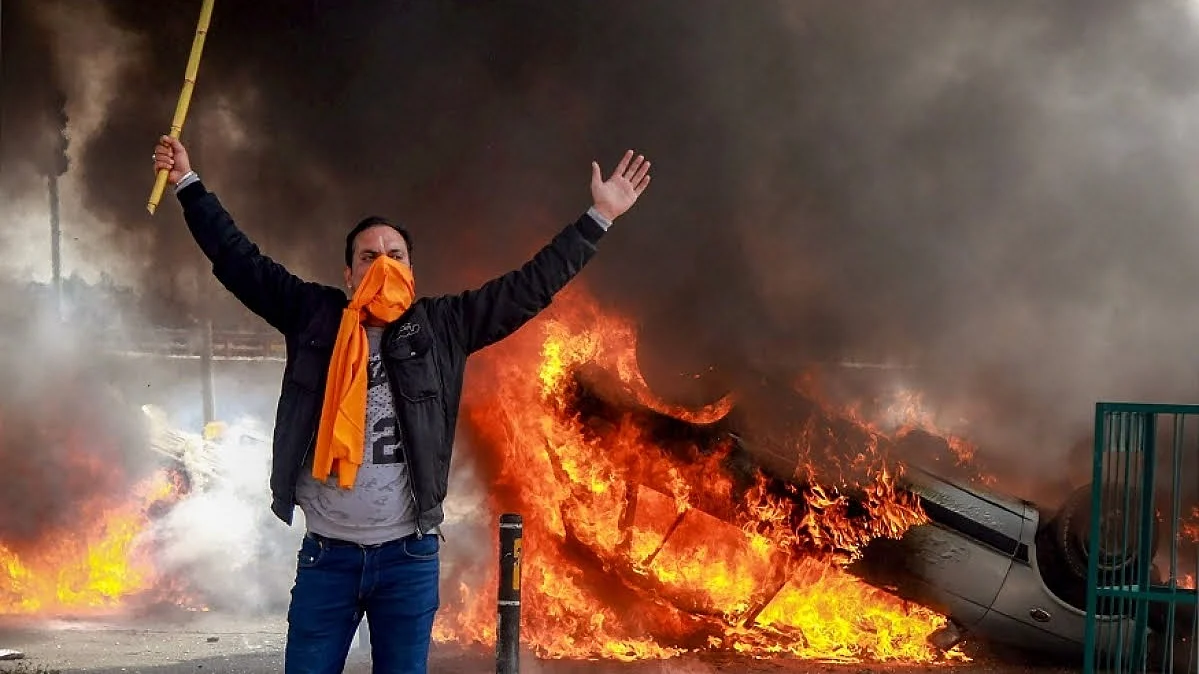J&K Governor Satyapal Malik owes an explanation for violence in Jammu
Security forces deployed in Jammu, allege senior police officers, did not have orders to restrain rampaging mobs in the wake of the terror attack in Pulwama

Even though security forces had been stationed in and around Jammu city on Friday, they were not given orders to act against the rioters as they went on a rampage burning vehicles and destroying property belonging to a particular community.
While police on Sunday claimed to have arrested over 100 people involved in arson, the winter capital city of Jammu and Kashmir remained on edge for the fourth consecutive day on Monday following violent protests over the Pulwama carnage.
Amid ongoing protests and hate attacks on a particular community, what is striking is the administrative inertia. Despite adequate information being forwarded by intelligence agencies, Governor Satya Pal Malik’s administration hadn’t deployed required security personnel in the sensitive areas such as Gujjar Nagar, Residency Road and Janipur.
On Friday morning, when a rally reached Vivekanand Chowk, there was hardly any police accompanying the protestors to ensure that demonstrators don’t raise provocative slogans or enter sensitive areas.
The district administration declared curfew at around 2:30 PM but by then over a hundred vehicles had already been damaged or set ablaze and the stretch between Gujjar Nagar and Vivekanand Chowk had turned into a war ravaged city with private vehicles burning everywhere.
“Army as well as police forces were stationed in the sensitive areas but their hands were tied as they didn’t have any official orders to control the rioters,” a senior police officer said on condition of anonymity. “Police or Army can’t take action on their own. They need directives from higher ups, which were not issued by the administration till late in the evening.”
The senior police officer went on to state that the Governor’s administration woke up from deep slumber and clamped curfew only after media and civil society raised a hue and cry over total breakdown of law and order.
“Had the curfew been strictly imposed on Friday morning, there would have been no arson, vandalism or violence in Jammu but it is still unclear why such laid back approach was adopted by state administration?” he added.
Reacting to the incidents of arson and rioting, president of Jammu Chamber of Commerce and Industry, Rakesh Gupta, who had given the call for Jammu Bandh on February 15, told local media, “There were apprehensions about communal flare-up on Thursday night. The administration didn’t ensure adequate deployment of forces in the sensitive areas of the city.”
“Had the administration taken proper security measures, Jammu district would not have been shamed today,” he added, describing the incidents of violence as “shameful.”
The Kashmir Economic Alliance Chairman Muhammad Yasin Khan also criticised the administration for “giving a free hand to the goons” to target a particular community. Khan who also heads the Kashmir Traders and Manufacturers Federation said: “In Kashmir, pellets and bullets are fired on protesters, but in Jammu rioters are given a free hand only because they apparently enjoy the blessings of some politicians.”
Even during the curfew and with the Army conducting flag marches in sensitive areas, there have been intermittent reports of rioters targeting business establishments during night. Also, Kashmiri transporters are being targeted on national highway.
Notably, Jammu city—that has become home to Pakistani refugees, militancy affected migrants over the decades—has never seen such violent protests in the past. Even during Amarnath land row agitation, when Jammu was on the boil for over two months, the minority community wasn’t targeted this way.
Follow us on: Facebook, Twitter, Google News, Instagram
Join our official telegram channel (@nationalherald) and stay updated with the latest headlines
